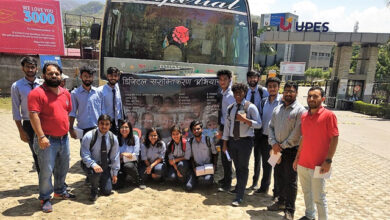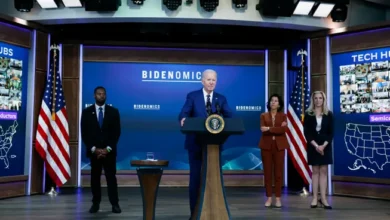Why “Proximity” Business Innovations Mean Big Upgrades to Your Daily Life

Robert C. Wolcott is a venture investor, author, and cofounder and chair of The World Innovation Network (TWIN Global). He is adjunct professor of innovation at the Booth School of Business, University of Chicago, and adjunct professor of executive education at the Kellogg School of Management, Northwestern University.
Kaihan Krippendorff is the founder of Outthinker Networks, a global think tank and a professional speaker. A former McKinsey consultant, he is a strategic adviser to numerous leading corporations.
Below, co-authors Robert and Kaihan share five key insights from their new book, Proximity: How Coming Breakthroughs in Just-in-Time Transform Business, Society, and Daily Life. Listen to the audio version—read by Robert and Kaihan—in the Next Big Idea App.
1. Proximity clarifies.
Corporate leaders and strategists today express feeling overwhelmed, trying to keep pace with and make sense of a proliferation of potentially disruptive trends. These trends include generative AI, 3D printing, digitization, robotics, and a flood of data. All of this is within a context of change, evolving customer needs, climate change, and geopolitical uncertainty. There have been few times in history when we have had to face so much change. The key to turning such proliferations of change into an advantage is not to try to predict the path of one or two of the changes but rather to put the pieces together and see the bigger picture.
In the mid 1700s, for example, the Industrial Revolution brought advances in steam engines, new textile technologies such as the power loom, our ability to tap coal to power steam engines and iron to build machines, as well as improvements in transportation and infrastructure. In the late 20th century, parallel advances in computing, telecommunications, and data processing thrust us into the information age. It transformed organizations and daily life.
We have found that the terms “industrial revolution” and “information age” help people see the big picture and clarify what is happening. The term “proximity” does the same for the swarm of changes that we are experiencing today. In our work with heads of strategy and innovation and other organizational leaders, we have found that nearly all of the trends on their radar suddenly come into focus when you look at them through the lens of proximity. The drive for sustainability and the growth of geopolitical uncertainty drives us to explore proximate solutions. Digitization of products and customers, AI, virtual reality, and 3d printing all enable proximate solutions to be delivered.
The proliferation of data often generated by connected devices, coupled with the democratization of data and the ability to share it more easily through APIs, coupled with predictive capabilities, allow us to identify where and when needs will arrive accurately.
2. Proximity compels healthcare toward prevention.
Proximity not only clarifies the chaos of technology change, but it also allows us to predict industry trajectories. For healthcare, digital technologies will shift the emphasis of healthcare from curing problems to preventing them.
Let me share a personal story. My father, Bob Wolcott, died unexpectedly of an aortal aneurysm in 2004 at the age of 63. He had just had a complete physical with a glowing bill of health. In fact, his doctor told him, “Bob, whatever you’re doing, keep doing it.” Two months later, he was dead. His doctor had no reason to order tests to discover an aneurysm, no concerning symptoms, in fact.
In our proximate future of healthcare, my dad’s outcome could have been very different and my family’s lives much better. Many of us already have health monitoring applications, like an Apple Watch or a Fitbit. Imagine in a decade when we have always-on health monitoring of every aspect of our bodies.
Meanwhile, AI analytics war around in the background, tracking every data point, discovering weak signals, and identifying problems before they’re a problem. In that not-distant future, your health monitoring system will alert you to a problem and recommend you visit the doctor.
“In this future world of proximate health care, you’re healthier and safer, and the cost of care is dramatically lower.”
The doctor tells you that you have stage zero pancreatic cancer, but you can treat it, and it’s not a big deal. Compare that to today: You wait until you have serious symptoms, perhaps even doubled over with pain. You visit the doctor and discover you have stage-4 pancreatic cancer. Today, that’s nearly a death sentence.
In this future world of proximate health care, you’re healthier and safer, and the cost of care is dramatically lower. There’s no comparison between the cost and pain of treating stage zero cancers and cancers in stages three or four. Decades of advocacy for prevention have had limited impact thus far. But the proximity of health diagnostics, monitoring, drug delivery, and more will help realize the promise of prevention and longer, healthier lives. With proximity, my father might still be alive today.
3. Proximity trends build on each other.
Any proximate technologies will have significant impacts on their own, but combined, their impacts become exponential. Think about proximate energy. Advances in energy technologies and practices that are rapidly pushing the production of energy closer to where it is used—from solar panels on roofs or distributed energy—accelerate the attractiveness of many other proximate technologies. It allows us to power factories that manufacture goods closer to the towns and cities in which they are needed. They also power health care solutions inside or closer to patients’ homes. These advances power vertical farms, growing food closer to schools and restaurants.
Layer on top of that advances in robotics, which are driving the creation of dark factories in which a small team of humans manage robots. They’re called dark factories because the robots don’t require the factory to be lit. These dark factories can operate in smaller and smaller formats economically, allowing us to push these factories even closer to where and when they are needed, closer to small towns and villages.
These types of proximate models are also enabled by 5G networks that can create a robust pipeline between those robots and the cloud. They can monitor and control factories remotely. They can shift production in real time between locations as demand changes. For example, say that your AI predicts the demand for a particular type of widget is about to drop in one city, but it will start ticking up in another. When those factories start leveraging 3D printing, they can quickly change not only how much they produce but the design of the specific products they are producing.
Proximate technologies build on each other, enable each other, and combine to move us on an exponential path toward P equals zero.
4. Discovering your proximity strategy.
You can apply proximity to your business so that you can turn proximity into several tangible, actionable, valuable, strategic moves. Building a proximity strategy does not necessarily require a big transformative bet.
Often, it involves seemingly small experiments. For example, one food company that explored proximity saw an opportunity to produce customized food from its raw ingredients that would be 3D printed close to restaurants and other food service venues.
“Building a proximity strategy does not necessarily require a big transformative bet.”
A law firm imagined, “What would it look like to be able to predict when a client would have a particular need for legal advice? How could we use a combination of human and AI-enabled solutions to deliver that advice without the client even having to pick up the phone and schedule a meeting?” A car wash chain envisioned building smaller form car washes that could be operated with fewer staff, thanks to robotics. These car washes could be placed closer to residential pockets to intercept customers before they got to the competition.
The possibilities of proximity for your business are outlined in four steps:
Step one: Envision P equals zero. What would it look like in your industry if just as a need arose, the solution was produced and provided at the same location and at the same time? For each product, service, or experience, brainstorm all the technical, social, or regulatory barriers that prevent production from approaching P equals zero. Likewise, identify the barriers that will limit the provision of value toward P equals zero.
Step two: Narrow this list down to the priority barriers that, if solved or removed, could make the biggest impact.
Step three: For each production and provision, brainstorm trends that might enable advances toward P equals zero. Narrow this list down to the priority trends that, if leveraged, are likely to have the most significant impact.
Step four: Leverage the barriers and trends you generated in steps two and three to brainstorm a list of opportunities, combining and redefining them as appropriate.
Prioritize this list while considering each opportunity’s potential impact on your business, the effort you imagine it might require to implement, and the likelihood of success. With those four steps, you can define your proximity strategy.
5. Virtual reality and space are both 100 percent proximate.
Part of the reason we’re confident that proximity is the path for all of our futures is that the two horizons of the 21st century—virtual reality and space—are entirely proximate.
Let’s start with space. During our research, I reached out to good friend and colleague Dorit Denoviel, a professor of space health at Baylor University and director of NASA’s grant program for space health research. When describing the concept of proximity, ever closer to the moment of demand, Professor Denovial cut me off and said, “Rob, you know what? Everything we’re investing in to help humans live in space is to drive proximity.”
“The rise of proximity also challenges us to consider what kinds of lives we aspire to live.”
What did she mean by that? When you’re in a spaceship for seven months to Mars, you’ve only got what’s on the ship. You can’t call Amazon because you forgot something, at least not yet. Nonetheless, all of the research for health, food, and entertainment is to allow humans to be in that small capsule for many months on the way to the stars.
Similarly, as virtual reality becomes more real, the VR experience becomes more comprehensive, engaging, and immersive. Then, by definition, we’ll be able to experience more of anything, anywhere, anytime. All that will be required will be VR technology and electricity.
There also exists the notion of the post-virtual world, a concept I’m developing with neuroscientist Moran Cerf. Post-virtual has a specific definition. We will be in the post-virtual world when we cannot tell the difference experientially between the real world—default reality, as techies call it—and the virtual world. After that point, no one will ask a stupid question like, “Should we meet in the real cafe or the virtual cafe?” That question won’t make any sense. We’ll have a broader spectrum of reality from which to choose.
Meanwhile, combine generative AI and VR, and later this century, we’ll have complete visceral experiences, entire lived environments generated from whole cloth customized to our desires anytime, anywhere. This is quintessential proximity and is both exciting and terrifying.
Proximity offers unprecedented opportunities to live better lives, but the rise of proximity also challenges us to consider what kinds of lives we aspire to live. What kind of world would we like to create? In a world where technology can increasingly do anything, the critical question for each of us becomes, What should we do and why?
To listen to the audio version read by co-authors Robert Wolcott and Kaihan Krippendorff, download the Next Big Idea App today:
Read More


